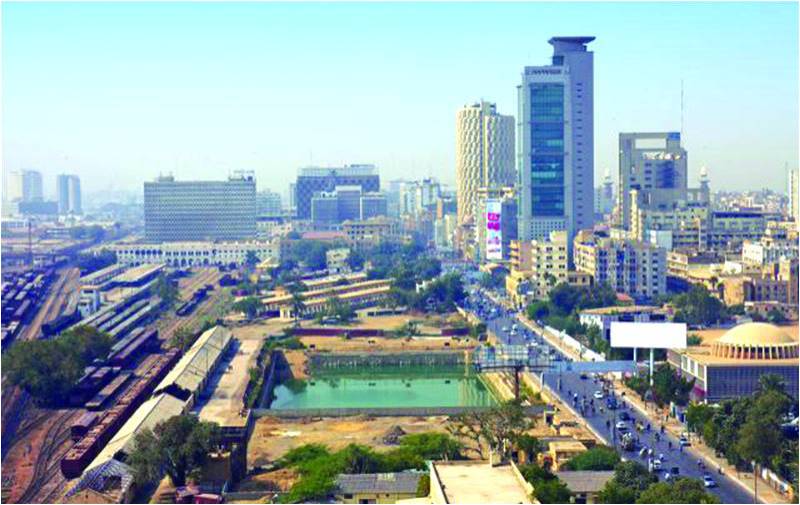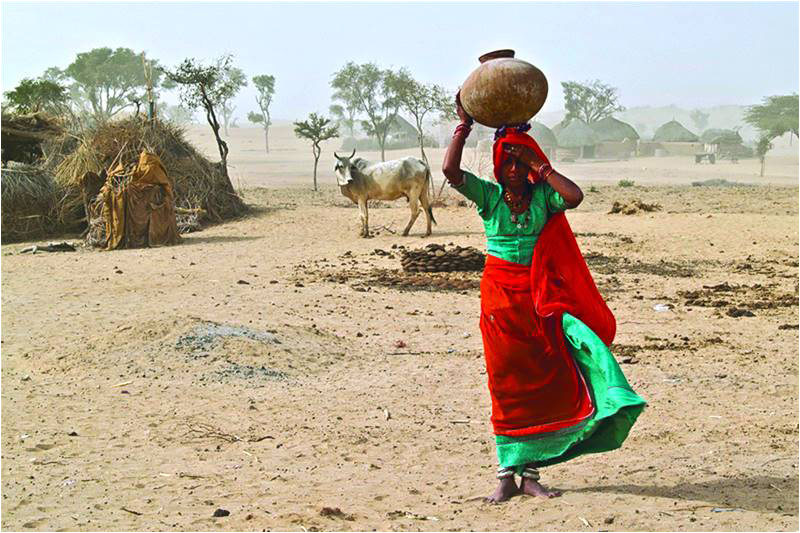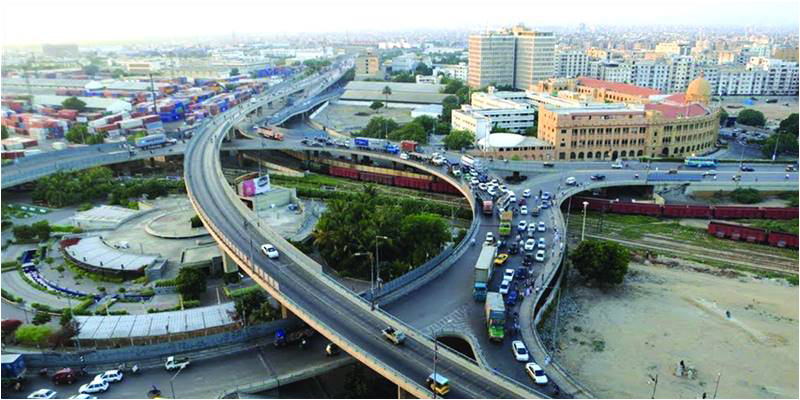
Today, more than half of the world’s population (55%) dwells in cities. According to the UN World Urbanization Prospects “More than 4 billion people out of total 7.5 billion live in urban areas globally and it’s estimated that this figure will exceed 7 billion by 2050.” The pace of urbanization seems more rapid in developing countries than developed ones, where cities are expanding or growing as the result of the increase in katchi abadis (squatter settlements). Such katchi abadis are deprived of all basic human needs and possess almost zero opportunity for human development. If humans continue settling in the cities with the current pace, it’s confirmed that by 2050, more than 70 percent of the world’s population will be dwelling in urban areas.
The urbanization process also brings some very atypical environmental, social, economical and political challenges along with itself. Owing to urbanization, different countries face different problems, but some broad general areas can be identified: the reduction in agricultural land, changes in hydrology and the end of natural habitats. By 2050, Asia and Africa will be badly affected by this fast (and furious) urbanization process. Currently over 1 billion people of the world live in urban slums while 590 million of these live in East, South-East, Central and South Asia.

The shift of populations to cities in Pakistan has already given birth to various issues in cities, which mainly consist of economic breakdown, social inequality and environmental degradation. Due to unplanned increase of population in cities, the environment and basic infrastructure of cities have also been badly affected. Planning and policy to address rapid urbanization issues has completely failed so far. Whether they would be the katchi abadis or pakki abadis, the fact remains that dwellers in both types of settlements dump sewage-related waste into the sea or fresh water sources, which degrades both the environment and human health. With the lack of interest by authorities in doing something about the sewage problem, ground water has also been badly affected at or near many urban locations.
Overpopulation pressures on Pakistani cities have increased since 1947 and continue till the present day.
Effective urban planning requires above all that a master plan should have been designed for every city. But how interested in this have our authorities been? Consider: 5 different plans have been made for Karachi and 22 other cities for carrying out development schemes. Their impact on actual planning practices remains an open question.

In the 1951 census, Sindh’s urban population used to be about 29 percent. It has reached 53 percent in 2017 and it may reach even 70 percent within the coming five years. The question of urban planning, therefore, is now increasingly a do-or-die situation.
As large swathes of the entire country’s population begins movint to Sindh’s cities, the land of Sindh itself is getting barren day by day. It is losing its fertility, water resources are getting contaminated and depleted at a rapid pace and the basic infrastructure of almost every town of the province is getting destroyed. The Sindh government has recently established a provincial body namely theSindh Master Plan Authority (SMPA) to deal with these issues. SMPA will work as a separate entity without any influence of the Sindh Building Control Authority. In a recently held official meeting, Sindh’s Chief Minister stated that the master plans of 17 cities of Sindh will be completed by December 2020.
Making master plans of cities is the very first step. Then comes the implementation phase. Hopefully, the new authority will not follow the footsteps of all previous authorities/bodies which have failed to deliver.
But the planning issues are not just about cities. Rural areas cannot be ignored.
Villages where hunger and poverty has increased drastically should also be brought in the development and planning process. Recently, the Chief Minister of Sindh, while chairing a meeting about the ongoing development schemes in the province, said that the Sindh government will build a model village in every district of the province soon, which will have facilities like schools, hospitals, water supplies, solar energy, cemented streets, mettaled roads and drainage systems. It is a good gesture because if people will be provided basic human needs where they live, they might have lesser need to undertake the difficult move to cities.
Poverty has increased to such a level in rural Sindh that people are committing suicide on a daily basis. In 2019, some 99 people committed suicide in the district of Tharparkar alone. In fact, the district of Tharparkar and all three coastal belt districts i.e. Thatta, Sujawal and Badin have been suffering severely due to unending negligence of concerned authorities and repeated occurrence of natural calamities. Irregular rains and disturbances in annual rain patterns have made Tharparkar a drought-hit region for years. Destroyed infrastructure from the 1999 cyclone and 2011 floods has not yet been fully rebuilt in coastal belt districts of Sindh. The condition of health, education, safe drinking water, electricity and drainage systems is even more deplorable.
Such harsh circumstances force rural people of Sindh to migrate to cities without knowing that the resources in cities are already limited and their problems could easily be compounded by the time they arrive there.
The writer is a freelance contributor and he can be reached at abbaskhaskheli110@gmail.com
The urbanization process also brings some very atypical environmental, social, economical and political challenges along with itself. Owing to urbanization, different countries face different problems, but some broad general areas can be identified: the reduction in agricultural land, changes in hydrology and the end of natural habitats. By 2050, Asia and Africa will be badly affected by this fast (and furious) urbanization process. Currently over 1 billion people of the world live in urban slums while 590 million of these live in East, South-East, Central and South Asia.

The shift of populations to cities in Pakistan has already given birth to various issues in cities, which mainly consist of economic breakdown, social inequality and environmental degradation. Due to unplanned increase of population in cities, the environment and basic infrastructure of cities have also been badly affected. Planning and policy to address rapid urbanization issues has completely failed so far. Whether they would be the katchi abadis or pakki abadis, the fact remains that dwellers in both types of settlements dump sewage-related waste into the sea or fresh water sources, which degrades both the environment and human health. With the lack of interest by authorities in doing something about the sewage problem, ground water has also been badly affected at or near many urban locations.
Overpopulation pressures on Pakistani cities have increased since 1947 and continue till the present day.
Effective urban planning requires above all that a master plan should have been designed for every city. But how interested in this have our authorities been? Consider: 5 different plans have been made for Karachi and 22 other cities for carrying out development schemes. Their impact on actual planning practices remains an open question.

In the 1951 census, Sindh’s urban population used to be about 29 percent. It has reached 53 percent in 2017 and it may reach even 70 percent within the coming five years. The question of urban planning, therefore, is now increasingly a do-or-die situation.
As large swathes of the entire country’s population begins movint to Sindh’s cities, the land of Sindh itself is getting barren day by day. It is losing its fertility, water resources are getting contaminated and depleted at a rapid pace and the basic infrastructure of almost every town of the province is getting destroyed. The Sindh government has recently established a provincial body namely theSindh Master Plan Authority (SMPA) to deal with these issues. SMPA will work as a separate entity without any influence of the Sindh Building Control Authority. In a recently held official meeting, Sindh’s Chief Minister stated that the master plans of 17 cities of Sindh will be completed by December 2020.
Making master plans of cities is the very first step. Then comes the implementation phase. Hopefully, the new authority will not follow the footsteps of all previous authorities/bodies which have failed to deliver.
But the planning issues are not just about cities. Rural areas cannot be ignored.
Villages where hunger and poverty has increased drastically should also be brought in the development and planning process. Recently, the Chief Minister of Sindh, while chairing a meeting about the ongoing development schemes in the province, said that the Sindh government will build a model village in every district of the province soon, which will have facilities like schools, hospitals, water supplies, solar energy, cemented streets, mettaled roads and drainage systems. It is a good gesture because if people will be provided basic human needs where they live, they might have lesser need to undertake the difficult move to cities.
Poverty has increased to such a level in rural Sindh that people are committing suicide on a daily basis. In 2019, some 99 people committed suicide in the district of Tharparkar alone. In fact, the district of Tharparkar and all three coastal belt districts i.e. Thatta, Sujawal and Badin have been suffering severely due to unending negligence of concerned authorities and repeated occurrence of natural calamities. Irregular rains and disturbances in annual rain patterns have made Tharparkar a drought-hit region for years. Destroyed infrastructure from the 1999 cyclone and 2011 floods has not yet been fully rebuilt in coastal belt districts of Sindh. The condition of health, education, safe drinking water, electricity and drainage systems is even more deplorable.
Such harsh circumstances force rural people of Sindh to migrate to cities without knowing that the resources in cities are already limited and their problems could easily be compounded by the time they arrive there.
The writer is a freelance contributor and he can be reached at abbaskhaskheli110@gmail.com

